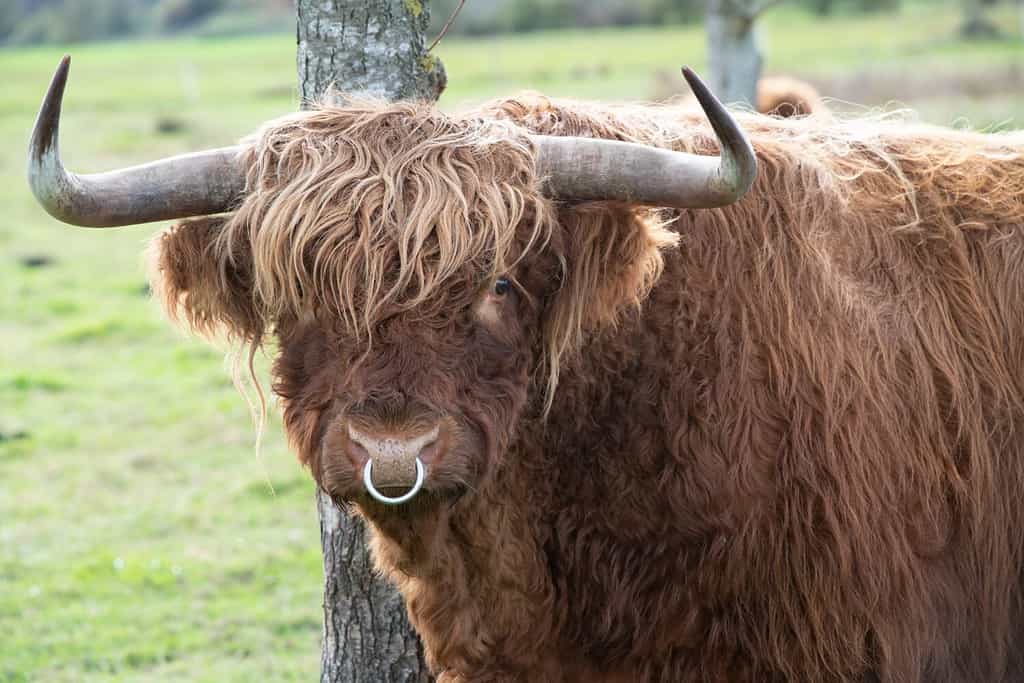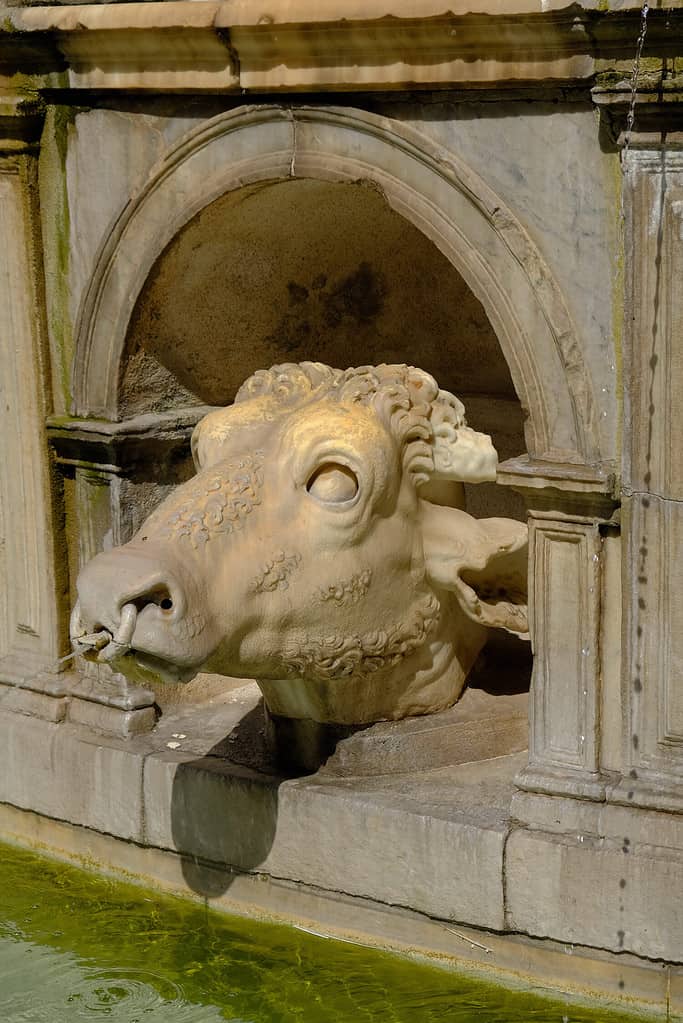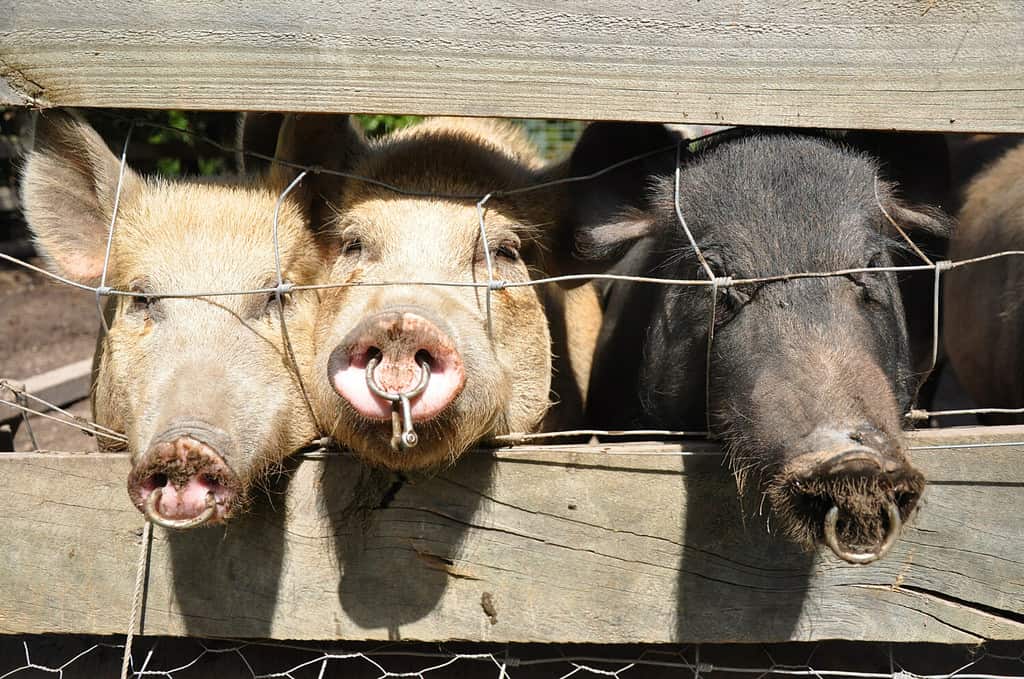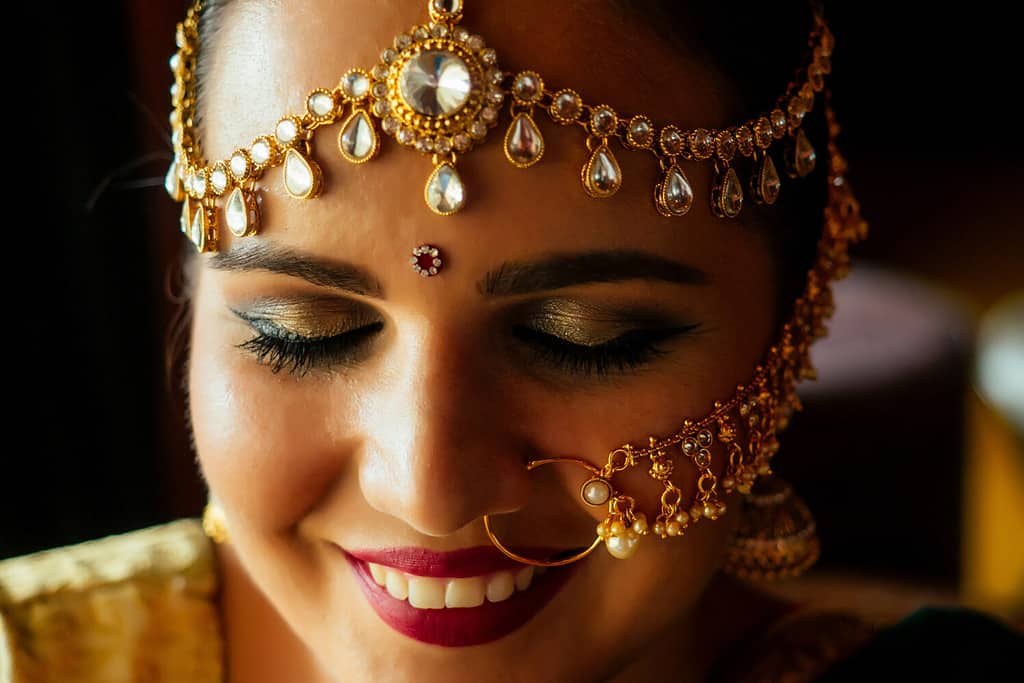What Is the Purpose of Bull Nose Rings?
In recent years nose rings have grown in popularity as an edgy fashion statement. But piercing the nose to insert a ring is a practice that has been used in livestock and people for thousands of years. Obviously, putting a ring in the nose of a bull is not for fashion, but what is the practical purpose of it?

©leopictures/Shutterstock.com
Key Points
- Ancient civilizations practiced piercing the nostrils of livestock and people since about 4,000 years ago.
- In animals, its purpose is to control undesirable animal behavior and as a safety measure when trying to manage a large and dangerous animal such as a bull.
- In people, nose rings have been used as status symbols in traditional cultures around the world.
- They can represent age, marriage status, wealth, or leadership positions.
- In modern Western culture, some people consider them a symbol of rebellion, but as they have become more popular, they are more often seen as just a fashion choice.
History of Nose Rings

©DRIMOROND/Shutterstock.com
3,000-4,000 years ago ancient civilizations such as Sumer in Mesopotamia and some of the civilizations of the Indian subcontinent placed rings in the noses of bovines, equines, and people. The practice spread around the world and became part of many cultures in Africa, Asia, and South and Central America. In animals, its main function was controlling undesirable behavior. In people, rings in the nose were an indication of status, wealth, and beauty.
Purpose of Nose Rings in Animals

©Sportlibrary/Shutterstock.com
In bulls and other animals, the purpose of piercing the septum and inserting a ring is usually to control an animal’s behavior. The nose is a sensitive part of the body, so when a ring there is pulled rubbed, it causes discomfort. Nose rings in calves help prevent them from suckling and in swine they prevent rooting.
In bulls, a ring in the nose is a safety measure to control these large and often aggressive animals. It is not required by law to use a ring on these animals, but many farmers choose to do so. Piercing a bull’s nose happens at 9-12 months. The farmer can use a rope or staff attached to the ring to lead the animal around. The ring can also be attached to a rope or chain attached to the bull’s horns or collar to limit its aggressive movements. A length of rope might be left dangling from the ring so that when the bull ducks its head to attack it will step on the rope and stop itself.
Purpose of Nose Rings in People

©yurakrasil/Shutterstock.com
For Women
It’s often assumed that a pierced nose symbolizes slavery, but more often in human cultures, they are a sign of status and wealth. The symbolism differed from culture to culture and depending on where and how the nose was pierced and what type of piercing the person wore. In the early books of the Bible, nose rings for women were associated with marriage. By contrast, the practice for indicating a person was a permanent slave was to pierce their ear with an awl. In Hindu cultures, a nose ring marked a woman as being ready for marriage. A large and valuable nostril ring was a way to show off the husband’s wealth. In Middle Eastern and African cultures, it was also a portable kind of wealth the woman could wear and later sell to support herself if she became divorced or widowed.
For Men
Nostril or septum piercing was not only for women, though. Carvings at the Great Ballcourt at Chichin Itza indicate that Mayan men pierced their noses to indicate their status. North American tribes used nose piercings as a rite of passage. Tecumseh, the famous Shawnee leader, wore a ring in his nose to signify his leadership role. Traditionally, Asian cultures believed the left nostril to be the female side and the right nostril the masculine side, for piercing purposes.
Nose Rings in Modern Culture

©Ivan Kochergin/Shutterstock.com
In modern Western cultures, there is not a male or female side. Instead, individuals choose a side for their piercing based on personal preference. Nose piercings are not always as well-accepted culturally as ear piercings are. For example, educational institutions and workplaces sometimes place restrictions on wearing nose jewelry, particularly for people in customer service positions. Families of minors are less likely to agree to pierce their noses than their ears. Because they are seen as more “edgy,” some people do choose nose piercings as an expression of rebellion and individuality. As they become more common, however, they’re increasingly seen as simply another fashion choice with no specific cultural meaning.









